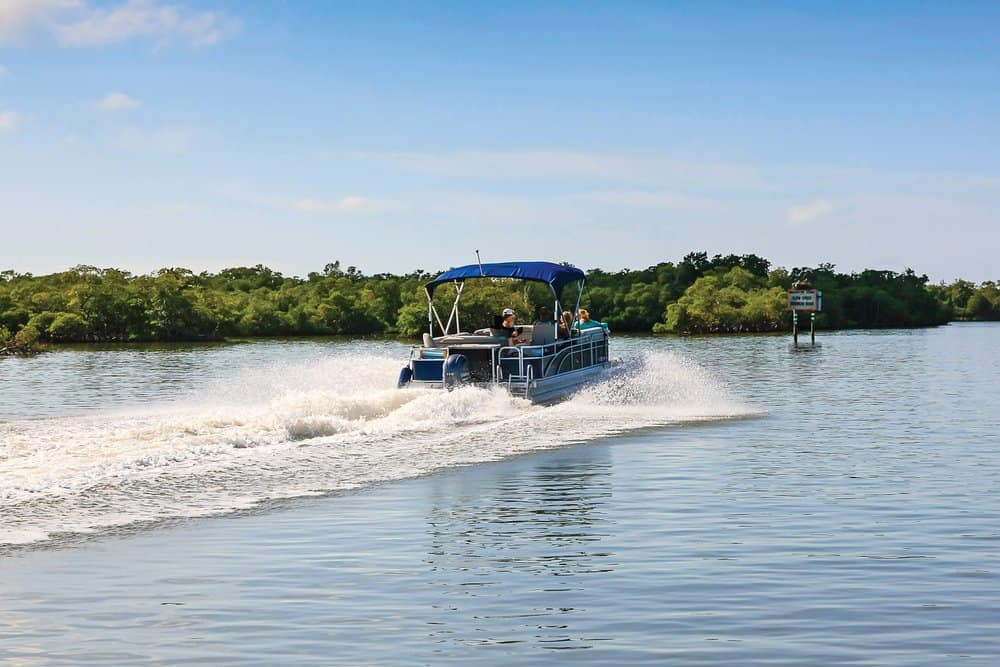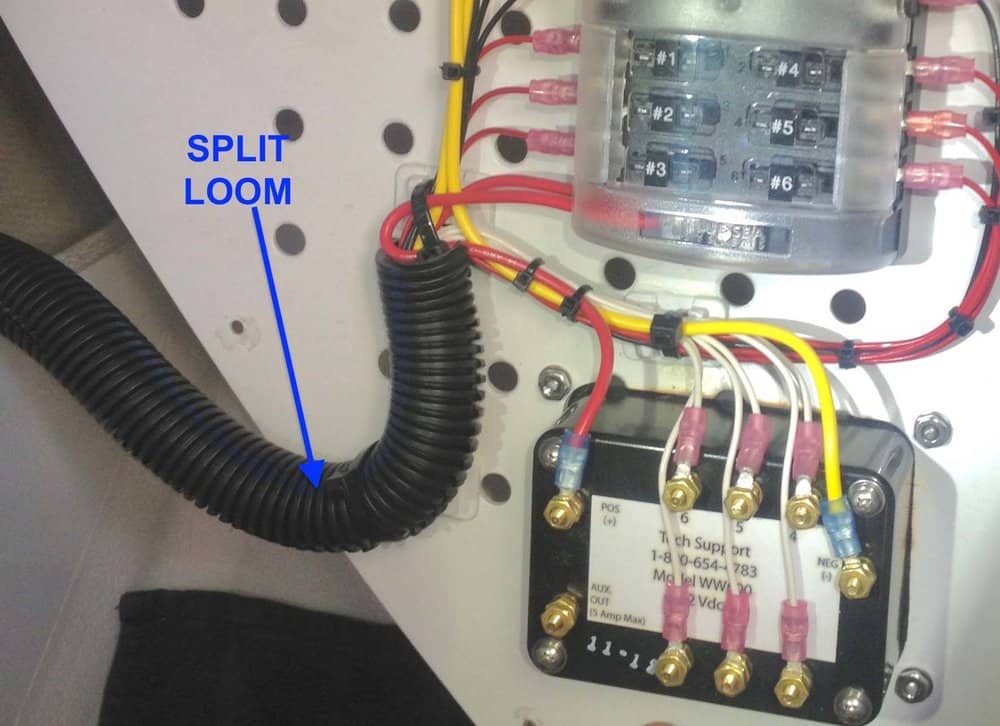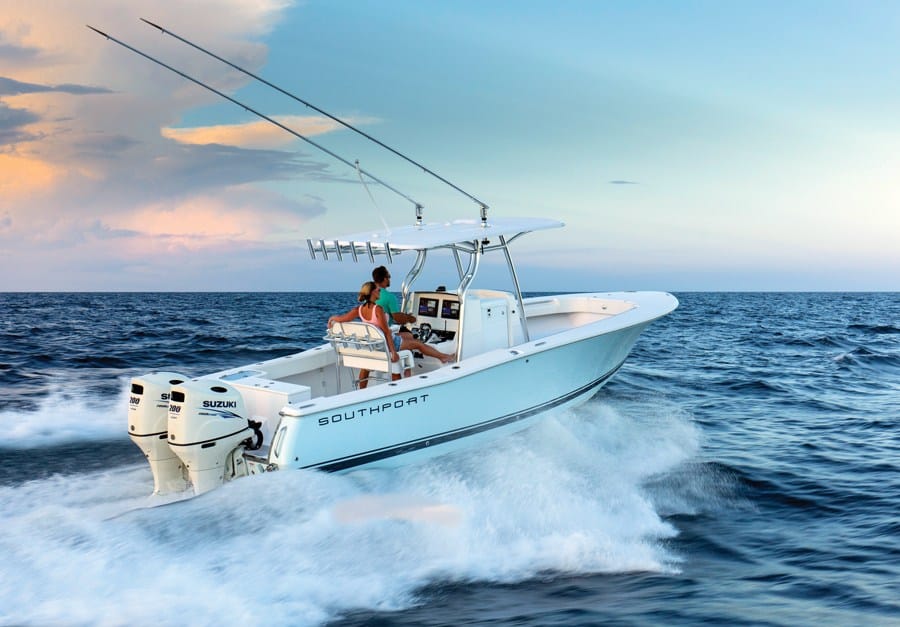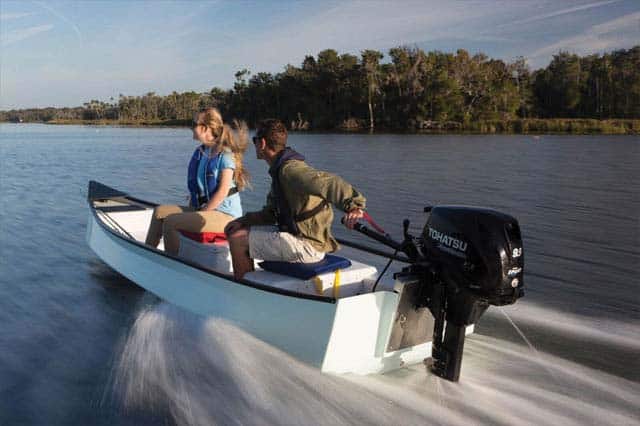Modern pontoon platforms are plying Chesapeake waters.
Last year at the Bay Bridge Boat Show, I asked David Connor of Rhode River Marina where he and his staff had launched their array of four 22- to 26-foot Bennington pontoon boats powered by 150- to 300-hp four-stroke outboards. The wind had been blowing out of the north for several days, making the open Bay choppy in front of the show’s marina basin, so it would have been logical to tow them on trailers to the nearby launch ramp at Matapeake then slip up the shore.
“Oh, we ran ’em up here from home,” Connor replied off-handedly.
Really? That’s ten miles of open water, running North-northeast into a solid two- to three-foot chop. Brian Schneider from Middle River’s Tradewinds Marina gave the same basic answer with his Premier pontoons. He and his staff had run a similar distance south, in following seas big enough to trip up any unwary skipper.
Welcome to the new age of pontoon boats. They have come a long way from the early-1950s Midwest versions, essentially mobile swimming floats—two rows of steel barrels welded together with a plywood platform bolted on top and a small outboard clamped to one end. As the market developed for these supremely roomy vessels, manufacturers with aluminum welding expertise have learned to build tubes that are more streamlined and with features borrowed from monohulls like lifting strakes, spray rails and sharp bow entries.
In fact, two long, narrow tubes with a deck above and outboard power behave in the water similarly to a displacement power catamaran, offering efficient cruising speeds in the teens and topping out in the low 20s. Pontoon boats like these have been available for several decades at relatively low prices, though they are limited to calmer waters in the rivers. At speed, they tend to lean outward instead of inward, as cats do, which can be unnerving for first-time passengers. One pontoon boat of this type that has certainly stood the test of time is Captain Mike Ostrander’s 24-foot Discovery Barge II, with which he has been offering catfishing charters, eagle tours and historical trips on the James River below Richmond for 16 years (www.discoverthejames.com).
In fact, Mike also runs the 40-foot Spirit of the James pontoon boat for the James River Association’s Ecology School. Spirit is US Coast Guard inspected to carry 40 passengers for hire, one of a sturdily built class of commercial vessel increasingly popular for education programs and water taxi duty. Conventional twin-hull pontoon boats serve their basic purpose well with great carrying capacity and efficient operation at moderate speeds.
Meanwhile, those open decks offered supremely adaptable open platforms for everything from lounges and tables for picnics and parties to two-story water slides. Early on, anglers fitted swivel deck chairs and other fishing accessories for panfish, Midwestern walleyes, and catfish (as per Discovery Barge II) to bottom fishing for croakers on the Chesapeake’s mid-salinity tidal rivers. The furniture originally tended to be plywood structures with upholstery, carpet and stamped aluminum, but even freshwater environments eventually drove the manufacturers to more robust fixtures.
Today, the aluminum is anodized against corrosion and much stronger, including solid, extruded keels, I-beams and hat sections that speak of serious engineering. Pontoon boats destined for salt water get proper sacrificial zinc anode systems. The furniture is now built in modules of roto-molded polyethylene, the same durable, waterproof material used to build modern kayaks. Decks are still marine plywood for the most part, but sometimes sheathed underneath in aluminum and covered by strong warranties. Deck covering and upholstery are marine-grade, incorporating the same advances in materials available in monohull boats. Most brands offer Bimini tops, arches to carry speakers and wakeboards, and folding fabric changing rooms and portable marine heads. At least one manufacturer offers a central cabin for overnighting. To accommodate these amenities, pontoon lengths have increased from the 18 to 24 feet with eight foot beams of 25 years ago to 32-footers with 12-foot beams capable of doing more than 50 knots with triple 300-hp outboard engines.

All this gear and power adds weight, requiring more buoyancy from the hulls. The new breed to solve this problem is the tri-toon, which features a central hull added to the two outside tubes. This configuration offers several advantages and some interesting specialized variations, albeit at greater weight and cost. The obvious advantage is greater running surface underwater to allow the boat to rise onto plane.
Some manufacturers offer round central tubes of greater diameter, some offer an elliptical center tube with more buoyancy (albeit with somewhat less strength), and at least one gives the center tube a flat planing pad. A couple of companies drop the center tube an inch or so to help the boat bank in turns like a monohull. Manitou’s patented V-toons ride on round center tubes dropped 1.25 inches below the side tubes, providing an effective 5.25-degree deadrise, which the company says its engineers arrived at after testing various configurations. These sophisticated tri-toon hulls ride on various combinations of lifting strakes and spray rails. The center tubes offer obvious performance advantages, but they also provide space for central storage compartments for gear like wakeboards and fishing gear, as well as increased fuel capacity.
There’s a broad range of pontoon boats on the market including boats from 18 to 32 feet, 40 to more than 900 horsepower, and $15,000 to $250,000, just as there is for monohulls, power catamarans and rigid bottom inflatables. The bottom line in shopping is still to think carefully about what you want a boat to do for you.
If a pontoon boat seems to fit your needs, be very clear about not only its advantages but also its limitations. David Connor and Brian Schneider ran those boats to the Bay Bridge show in choppy water, but it was not downright rough. Even a big tri-toon is no match for steep four-footers or worse, which even the Bay’s tidal rivers can kick up when strong wind and current collide. And no, they are probably not great choices for jobs like quietly fishing the flats in Tangier Sound or following the schooner race all the way from Baltimore to Norfolk. Fortunately, there are a dozen or more marine dealers up and down the Chesapeake, such as Southeastern Marine on the East side of Richmond near the James and North Bay Marina in Selbyville, Delaware near Ocean City with broad experience in helping customers decide if a pontoon boat will suit their desires, and if so, what sort of tubes, deck layouts, power, and corrosion protection packages will be best.
Pontoon boats on the Chesapeake? With careful thought, yes. Don’t be surprised to see more of them out there in time.




